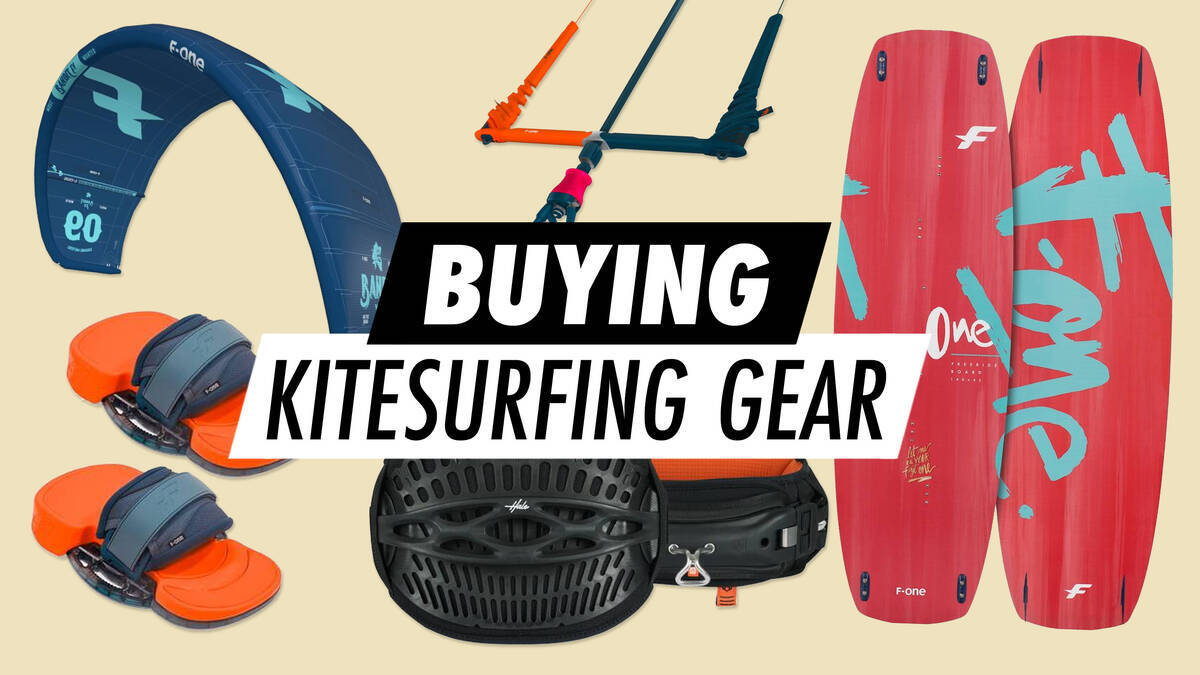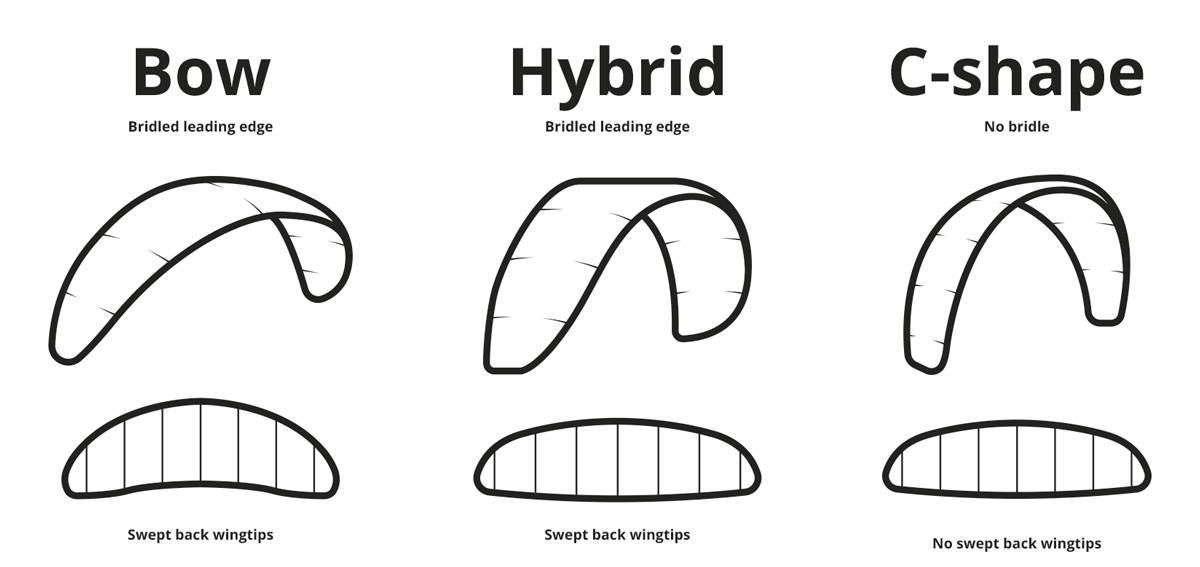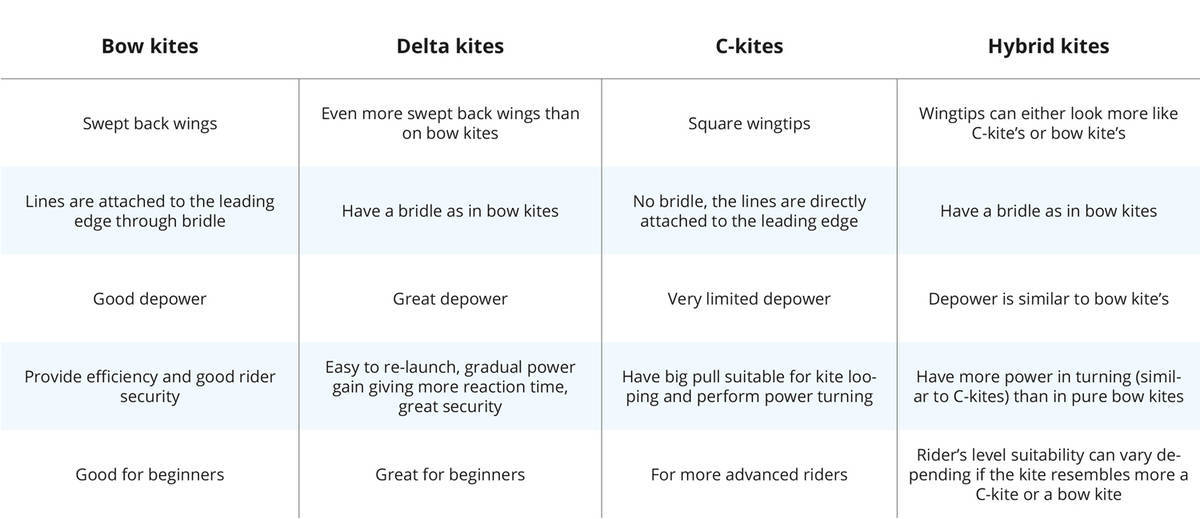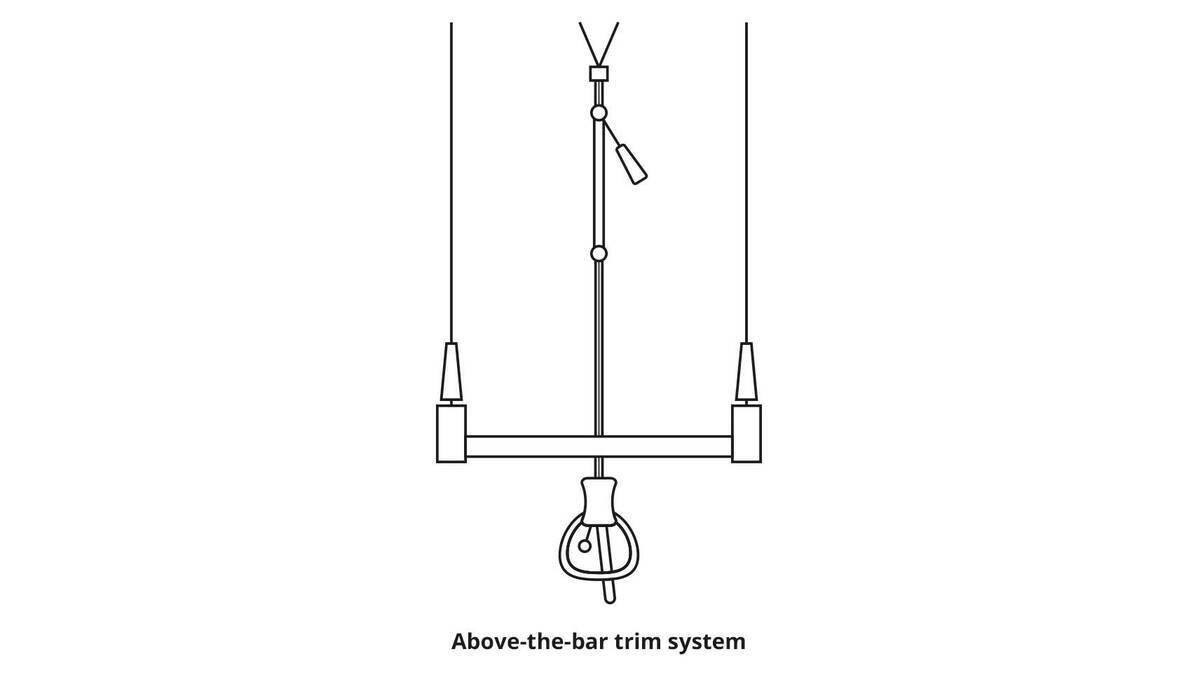Buying kitesurfing gear

The most important gear in kitesurfing will be the kiteboard and the kite itself. Here you can find some useful information when you are deciding on any of these.
1. The Kite
Kites vary in shape, size, and construction. The main types are Bow kites, Delta kites, C-kites, and Hybrid kites. Each one of them has specific characteristics and is, therefore, appropriate for different conditions. It is important that you research the wind conditions where you are planning on kitesurfing since the wind strength is a crucial factor for kites. For example, bigger kites are better for lower winds while smaller ones are suitable for stronger winds.

In the chart underneath, there are two terms that are quite important to explain and understand, since they create one of the essential differences between those kites.
The bridle is a system of lines attached to the front (leading) edge of your kite. Those lines can be arranged in a different setting depending on the kite. It looks like a spider web at the leading edge of the kite and then gathers into one line, to which you connect the lines from the bar. The bridle is basically a system allowing you to have more control over your kite, and specifically, the power gain of the kite. For example, the no-bridle C-kites have a more explosive power gain which allows you to perform more power turning and loopings but also requires more advanced skills to handle.
The bridle then is a system that allows a larger degree of depower compared to the C-kite shape. To depower means that you make your kite flatter which results in less of its surface hitting the wind, and therefore, reducing the pulling power.

2. Bar and lines
Between you and the kite, you must have the bar and the lines in order to manage the kite. You must wear a kite harness, which you connect to the chicken loop on the bar. In that way, you also connect to the lines. When you have done all of this, you get control of the bar, lines (‘your steering wheel’) and the kite.
The bar and the lines help you control your kite, make turns, speed up or speed down. There are many variations in regards to the bar and line set-up, however, one of the most common configurations is the 4-line bar. In this set-up, the two lines in the center are connected to the leading edge through the depower system. The other two lines, attached to both ends of the bar, are connected to the two wing tips, which help you steer the kite and make depowering and powering possible. Those are normally color coded and knot-matched in accordance with the tip lines from the bar to make the correct connection easy.

If we look up close, solely at the bar, there are many configurations as well, depending on the manufacturer. The most common distinction is the ‘above-the-bar trim system’ and ‘under-the-bar trim system’. In the first instance, you have more freedom of movement, but it may be a bit harder to reach the depower. In the second set-up, you get easier access since the depower is closer to you, but it might be a hustle to reach.

Important to mention here is that, when you decide to change the lines, you should always make sure to buy the right length for your specific kite model because shorter or longer lines may compromise the kite control you are used to.
3. The Kiteboard
Another essential for kitesurfing is your kiteboard. As in many other board sports, there are a few main points when it comes to kiteboards:
- The shape: The board can be either twin tip (symmetrical in the front and back) or directional (surfboard). Additionally, you can have a square shape or a rounder one. Square shapes are good when it comes to edging, upwind and pop, whereas rounder shapes are good for carving and allow smoother landings.
- The rocker: The rocker is the curve of your boards from tip to tail. The more rocker (the more curved your board is) the better it will pop. However, flatter boards are better for edging.
- The concave: Adding concave (curve of your board between the side edges) adds smoothness to the ride and making landings softer.
- The fins: You can choose to ride your kiteboard either with fins or finless. If you are adding fins to it, keep in mind that larger fins give you more stability in choppy waters and while edging and easier upwind properties. Smaller fins are better in terms of gliding smoothly through the water surface.
- The size: The different brands come with different size recommendations. Generally, the size of the board depends on your weight and your skill level. The board should be big enough to support your weight and keep you floating while powered by the kite. For beginners, it is a good idea to go for a slightly larger board since it will increase your buoyancy. Later on, you can move towards a shorter board when you feel more comfortable and you have the skills to easily plane and getting the kitesurfing game on.
4. Are you a beginner?
If you are a beginner in kitesurfing make sure that you:
- Pick the right kite for you with a good depower
- Get some protection gear (Helmet, security knife and maybe an impact vest)
- Take an intro course into kitesurfing (It is always good to have a few guided sessions)
- Find a kite-mate, it is safer and more fun to go kiting with a friend
